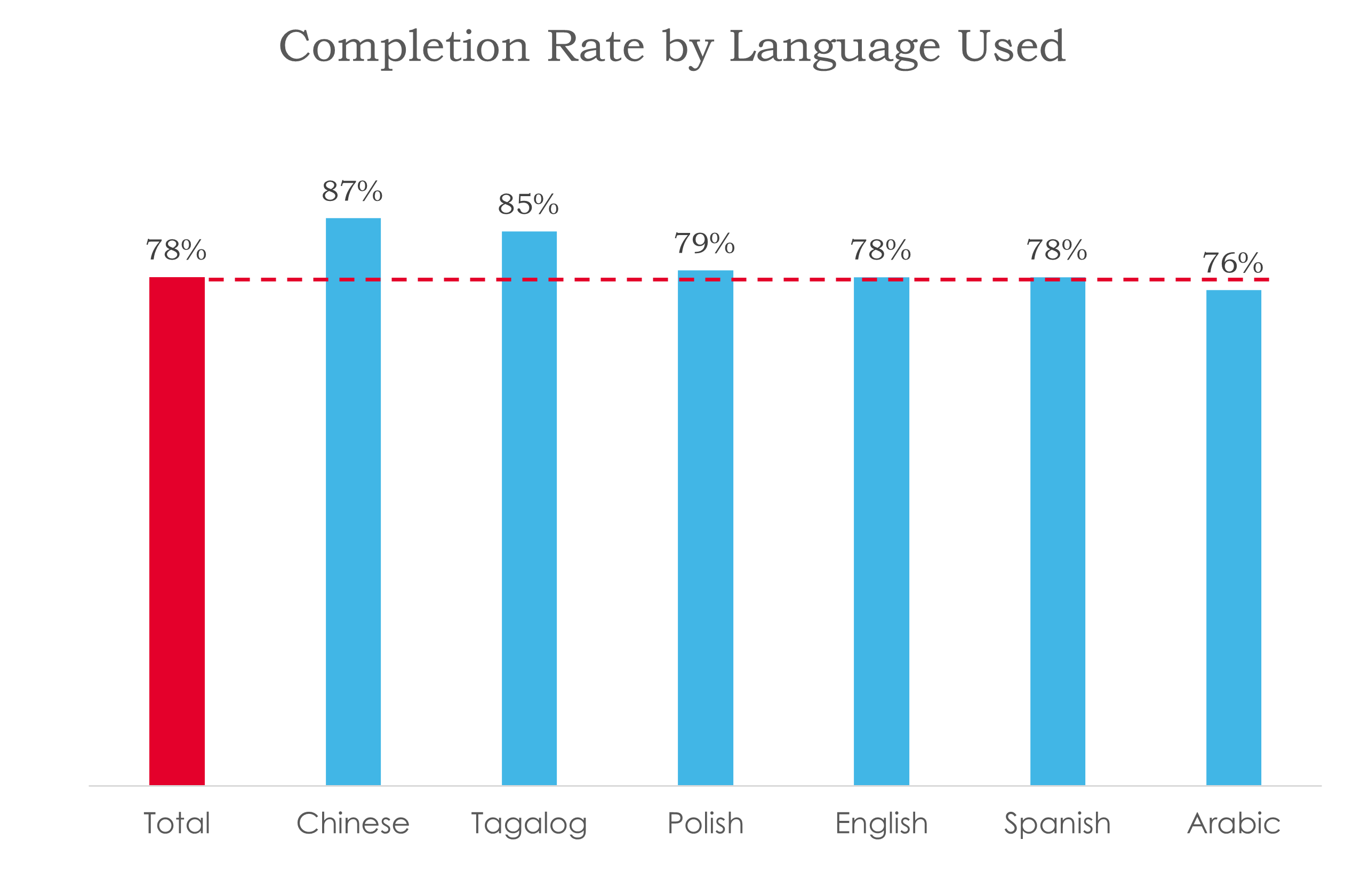Through a competitive RFP process, the city tapped GiveDirectly, the global leader in direct cash assistance, and AidKit, a technology platform enabling scalable, secure, and dignified cash aid programs, to administer the pilot.
With this public-private partnership, we developed an application process that was equitable, inclusive, human-centered, and that could be finished in less time than it takes to watch an episode of Seinfeld.
Many Paths, Same Endpoint
So, what were those happy paths? We wanted applicants to have the choice to apply:
- By themselves or with a helper
- Using whatever device they wanted
- Using any of six languages: English, Spanish, Chinese, Arabic, Polish, or Filipino
Previous installments of this blog recognized how individuals who need services the most are the hardest to reach. To mitigate the all-too-common pitfalls applicants face when seeking benefits, the application needed to be designed in a way that would not exclude people simply because their reality did not fit into a predefined box.
“You have to start with the understanding that we are serving people, not boxes that need to be filled,” said GiveDirectly US Director Sarah Moran “For the CRCP and all of our projects, we design our programs for the hardest to reach first.”
Spotlight: User-Testing the Application
To cross the bridge from intent to reality, we leverage a common practice in product development: “user-testing,” or trialing the technology with real people. With AidKit at the lead, we spent two weeks on user-testing the application across multiple devices (mobile, desktop and tablet), prioritizing non-native English speakers and people with disabilities for feedback.
“We build applications that aim to bring everyone into the fold. There’s no one linear path through an AidKit application; the prompts morph according to the myriad of lived experiences of the people applying,” said AidKit co-founder and CTO Ben Newhouse. “We rely on user testing to get feedback from a variety of people who will help us ensure that the process is smooth from a spectrum of perspectives.”
User-testing with disability advocates was particularly powerful. With their feedback, the application was tested with three top screen-reading technologies: Voiceover, JAWS, and NVDA. These tests resulted in accessibility-centered changes to the application interface and underlying code that would improve the experience for people with visual impairments, including:
- Improvements to keyboard navigation so applicants didn’t have to use a mouse
- Updated heading levels so screen readers could easily understand text hierarchy
- Rewritten semantic HTML so that screen readers would announce the right options and context for each question
Other adjustments addressed the needs of non-English speakers. For example, the “click to start your application” prompt on the CRCP website was updated to be written out in all six supported languages, with unique links that would automatically open the application in the desired language.
Adding the Human Element to Achieve Success
Although user-testing built our confidence about the accessibility and navigability of the application, we knew a human touch was also critical for applicant experience and success. In addition to the in-person application assistance provided by our outreach delegates, community partners and DFSS staff, GiveDirectly trained their customer support team to assist applicants by phone.
Overall, 78% of applicants who started an application completed the form. That’s over 176,000 individuals, 16% of whom identified as having a disability (though not specific to visual impairment). What's more, 9% of applicants completed the application in a language other than English, with no significant underperformance in any language.

We hope this post helped to illustrate one important way we used human-centered design to build choice and increase inclusion for the pilot. Keeping following this series for more insights from the field, and be sure to also check out the newest section of our site, Participant Profiles!


